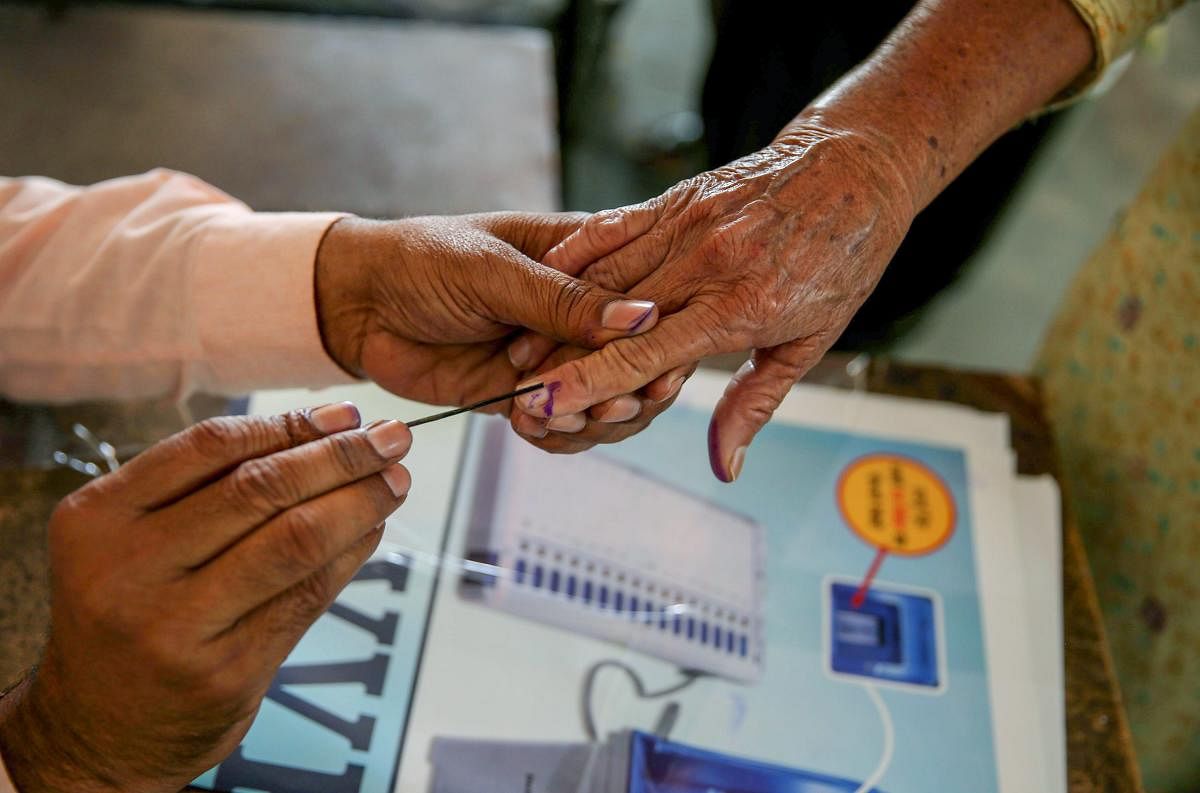
Ever since the Lok Sabha election results came trickling in, the historic nature of the verdict was all but apparent. This essay seeks to go beyond the surface and outlines five key ideas that go to explain voter choice.
Firstly, this election result is indicative of the fact that the ‘political context’ truly matters. The verdict in each state of the country can be explained in terms of the specificities of the politics of that state. In much of India, where the Bharatiya Janata Party (BJP) and the Congress were in direct contest (Himachal Pradesh, Uttarakhand, Rajasthan, Gujarat, Madhya Pradesh, Chhatisgarh, Arunachal Pradesh), the BJP did exceedingly well and more or less retained the ‘strike rate’ that it had achieved in 2014. This also explains the Congress score getting stuck at just about half a century.
Where the BJP was the key rival to a state based party (West Bengal, Odisha) the BJP emerged as an important player making significant gains, though they were not able to do better than the party in power at the state level. Where two alliances (including both the Congress and the BJP) were in direct competition (Maharashtra, Tamil Nadu, Bihar, Jharkhand) the effectiveness of the alliance at the ground level was critical. In states where the BJP/National Democratic Alliance (NDA) faced a splintered and divided opposition (Uttar Pradesh, Karnataka, Haryana, Assam, Delhi) they were able to benefit from the split in the non-BJP/NDA vote. Where either alliance faced a single party (Punjab, Goa) local specificities shaped the result. When the competition was essentially between state based parties (Andhra Pradesh, Sikkim and some states of the North East) local politics shaped the results. In strict bi-polar contests involving local alliances (Kerala) the competition between the alliances explained the result. Finally, in a multi-cornered contest (J&K, Telangana) the trends were inherently constituency specific
Secondly, the voter in India is clearly differentiating between national and state verdicts when the elections are held closely apart. This trend has been witnessed for quite a few years now. In Karnataka, while the state elected a House with no clear majority a year ago, this time around they gave a decisive mandate to the BJP. In three states of North India (Rajasthan, Madhya Pradesh and Chhattisgarh), the BJP was voted out of power and the Congress formed the government in December 2018. Within a few months, the tide had reversed as the BJP swept all three states, leaving the Congress clutching on to just three Lok Sabha seats of the sixty four. In Telangana, the TRS rode to power with a strong wave of support in December. They barely managed to win half the seats in the Lok Sabha polls.
Thirdly, when elections for the Lok Sabha and the Assembly are held simultaneously, the verdict at the state level tends to drive the national verdict. The results in Andhra Pradesh, Odisha, Arunachal Pradesh and Sikkim go to prove this point. Some exit polls had indicated that there could be a ticket splitting in Odisha. However, the results indicated that the voters when voting simultaneously, tend to support the party they would want to give the mandate for at the state level. Those who have been advocating ‘One Nation One Poll’ should pause to think if they would want a national verdict that replicates state preferences.
Fourthly, while this election as proved that leadership matters, it is not merely about national leadership. In much of North, West and Central India, the Modi factor was an important element in the BJP’s success. Yet, in states like Tamil Nadu, Punjab, Odisha, West Bengal and Andhra Pradesh state level leaders also played a key role in deciding and defining the verdict in their states.
Finally, this election result shows how important it is for a party to win a ‘perception battle’. The BJP trumped its opponents by capturing the ‘mind space’ on critical issues. The BJP won the perception battle on Balakot while the Congress did not succeed when it came to Rafale. The ‘Chowkidar Chor Hai’ charge of the Congress President created a ‘counter- narrative’ which was more effective in capturing the imagination of voters. While the Opposition tried to audit the government’s record on employment and other electoral promises of 2014, the government was able to effectively redirect the narrative to the ‘idea of India’ and ‘sincerity of intentions’ which again appeared to resonate better.
In significant ways, this election has shown how campaigns, their strategies and the ‘imagery’ that they create are the defining moments in voters deciding their electoral preferences.
(Sandeep Shastri is a political/election analyst. He is Pro Vice-Chancellor, JAIN – a deemed to be university)